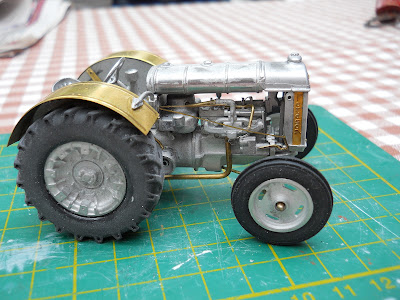After some research into why two French locomotives ended up in rural Denmark on Nystrup Gravel's little railway, I have finally found some information. A news paper article from 1946 outlines the story of how the engines came to Denmark. I have attached a copy of the article below. To see how my models of the Billards were built go to Flickr.
To sum up the history, the two Billard T75 locos were originally built for the French army for use on the Maginot Line. As France fell to the Germans the locos were sent to Denmark in 1941 or 1942 and used on some of the huge construction projects (bunkers and air fields) the Germans undertook in Denmark during the occupation 1940-1945. Not far from Nystrup the Germans were constructing an air field, but never managed to finish it, although it did operate some planes, primarily night fighters. Most of the plant were left behind in huge dumps when the Germans left Denmark in May 1945. The equipment at countless such dumps across the country were auctioned off by the Danish authorities to contractors, brick works etc. From the article it seems the two Billards were aquired by Nystrup Gravel at just such an auction in 1946. Equipment of a more military nature were taken care of by the British military - a few planes and radar devices being taken to the UK for evaluation - the rest being scrapped.
To sum up the history, the two Billard T75 locos were originally built for the French army for use on the Maginot Line. As France fell to the Germans the locos were sent to Denmark in 1941 or 1942 and used on some of the huge construction projects (bunkers and air fields) the Germans undertook in Denmark during the occupation 1940-1945. Not far from Nystrup the Germans were constructing an air field, but never managed to finish it, although it did operate some planes, primarily night fighters. Most of the plant were left behind in huge dumps when the Germans left Denmark in May 1945. The equipment at countless such dumps across the country were auctioned off by the Danish authorities to contractors, brick works etc. From the article it seems the two Billards were aquired by Nystrup Gravel at just such an auction in 1946. Equipment of a more military nature were taken care of by the British military - a few planes and radar devices being taken to the UK for evaluation - the rest being scrapped.
 |
| Article from Nystrup Folkeblad 1946 on the story of Nystrup Gravel's two new locomotives. Not completely without faults (journalists, you know...) as the locos are mentioned having Renault engines. |









